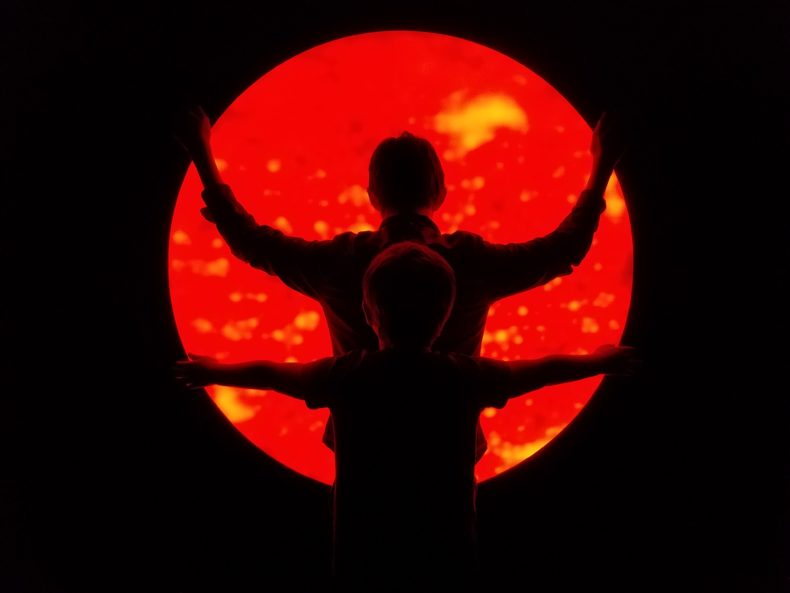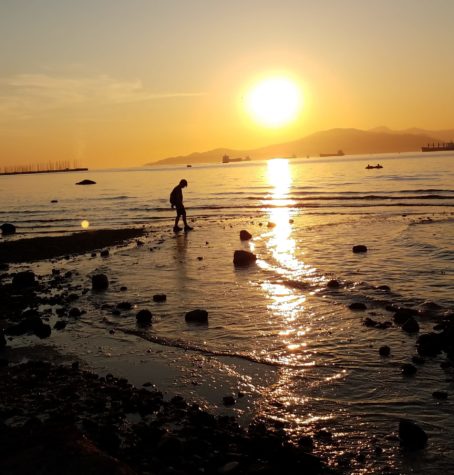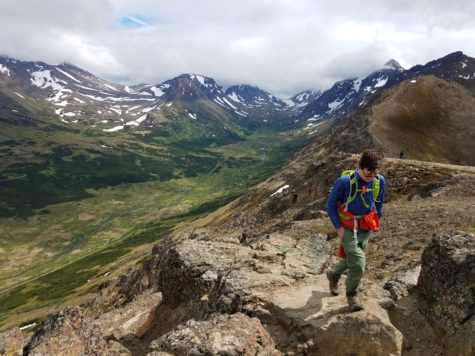
My boys and I have gone to the sun and back. Not literally, of course. We’ve been on the curve of the Earth the whole time. But we’ve been on a mission, 20 nights on the road traveling north toward the longest day of the year.
Our trip started in Colorado near the 40th parallel two weeks before summer solstice, when the sun would reach its northernmost position in the sky. At our latitude, we had fifteen hours of daylight, long days of walking as we carried backpacks across a 10,000-foot plateau. Sunset was a golden band rising up the tallest aspens around 8:30 pm, five and a half more hours of daylight than we get in winter.
As a kid, I noticed summer days were markedly longer than winter’s, but I didn’t know why. Daylight hours must have been on some kind of dimmer switch. My kids learned differently. At home in Colorado, we have a western view, a big sunset horizon. We mark the sun’s northern point on the flank of a mountain range just across the Utah border, and then in winter track it south, almost to Dove Creek, Colorado, a distance of ten fists held at arm’s length, about eighty miles north to south, June to December.
Our summer walk took six nights, sleeping in the woods and in canyon floors, hanging bear bags, and filtering water from creeks and springs. At the other end of it, we showed up in Montrose, Colorado, where we had a gig put on by the National Park Service and a local astronomy society. My 11 and 15-year-old boys and I got up on stage and told stories about what we’d seen in the heavens. We talked about our backpack to get here, the sky ripening with a bigger and bigger moon that had begun as a crescent, followed nightly by blazing Venus and Jupiter halfway behind.
Telescopes were set up outside of the auditorium. After the talk, we milled with a small crowd in the dark among the hums and clicks of telescopes automatically trained to follow stars and planets as they moved through the sky. Hushed and stooped over, we gazed into eyepieces, seeing the ribboned face of Jupiter and its axis of moons, and the M13 globular cluster like a faint torch of cotton candy more than 22,000 light years away.
The morning after our talk, my boys and I switched from backpacks to daypacks and roller luggage, and boarded a plane, following longer days north. That afternoon, we were in Vancouver, B.C., latitude 49°. Daylight lasted an hour and a half longer than in Colorado, sunny skies widening as we went north.

We all live under a calendar. The planet underneath us is relatively static with its mountains and rivers and inching tectonic plates, while the sky spins day and night, planets tracking forward and back, moon lagging behind the sun and rising almost an hour later every day. It’s not the hard boxes of calendars that we flip through on the wall, but loops and gears widening and closing, an organic kind of time; real time.
For the next week we wandered streets and glass towers, staying up late as a growing moon stepped back across the sky night by night. Late means the sun set around 9:30 pm, making our evenings long and languid. We ate late, leaving the restaurant or grocery by ten, sometimes eleven. We walked the urban coast with its blubbering seaweeds, its couples on blankets, people with dogs, and lone travelers sitting on boulders and cobbles to watch the sun set. Sun worshippers, all of us. Stars were far apart that evening, as dusk settled out past islands and freighters anchored in the bay.
After six nights in Vancouver, we flew on to Anchorage, Alaska, where I had a speaking engagement at latitude 61°. This far north, the sun set at 11:45, allowing for 19.5 hours of daylight, four and a half hours longer than where we’d started.
We were in Alaska for summer solstice, June 21. We heard that many people climbed the nearby mountains on this night, preferring the one called Flat Top where they could stand on a rocky football field of a summit a few thousand feet above the city and watch the sun finally kiss the Earth on the longest day of the year. Instead of climbing a mountain on solstice night, we went to a theater to see a late show. The movie let out well after midnight. When the exit doors opened, we walked into a sky bright enough to read by. The light didn’t hug the northwest horizon as it had in Vancouver, but formed a veil that covered the sky. There’d be no stars this far north. Getting back to a friend’s place by one in the morning, we still couldn’t stop talking about how bright it was, taking pictures of ourselves in the surreal glow of dusk seamlessly turning into dawn.

After four nights at our northernmost point, my boys and I flew from the Anchorage airport 2,400 miles south to Denver, back to near the 40th parallel. From the bright thick of the city, we managed to find enough stars to piece together our first constellations. Dark of night had returned.
Not wanting to go back to our hotel after restaurants and street vendors closed, we hired a late night bike-taxi to pedal us up one street and down another in downtown Denver. The three of us barely fit on the seat as a near-full moon showed between office towers. This was our welcome home. We’d experienced the rocker of the Earth. We’d tilted up to the sun, standing on our tiptoes, and now we were coming back, nights lengthening from here on, summer half over, school coming too soon.
Top Photo by Craig Childs, boys in the Anchorage Museum
I have followed your writing for as long as I can remember. Snagged your book, House of Rain, from a friend and refused to give it back until I found another copy. My husband and I have hiked and back packed all over Colorado, Arizona, Utah and the Pacific Northwest, and your writing allowed us to see it all with fresh eyes. What lucky children your sons are..
It is a joy for me to read your father/sons adventures – together. Yes.